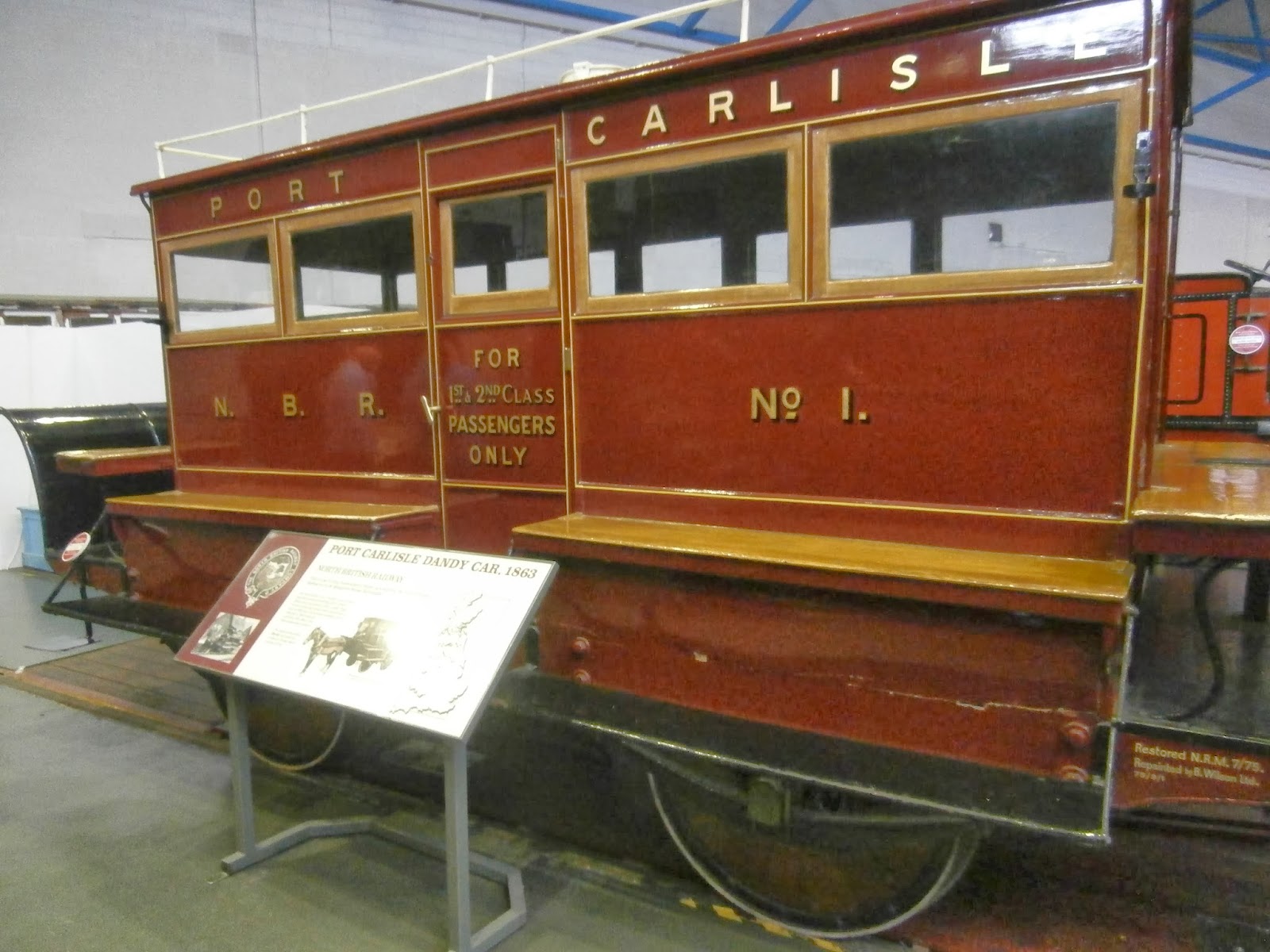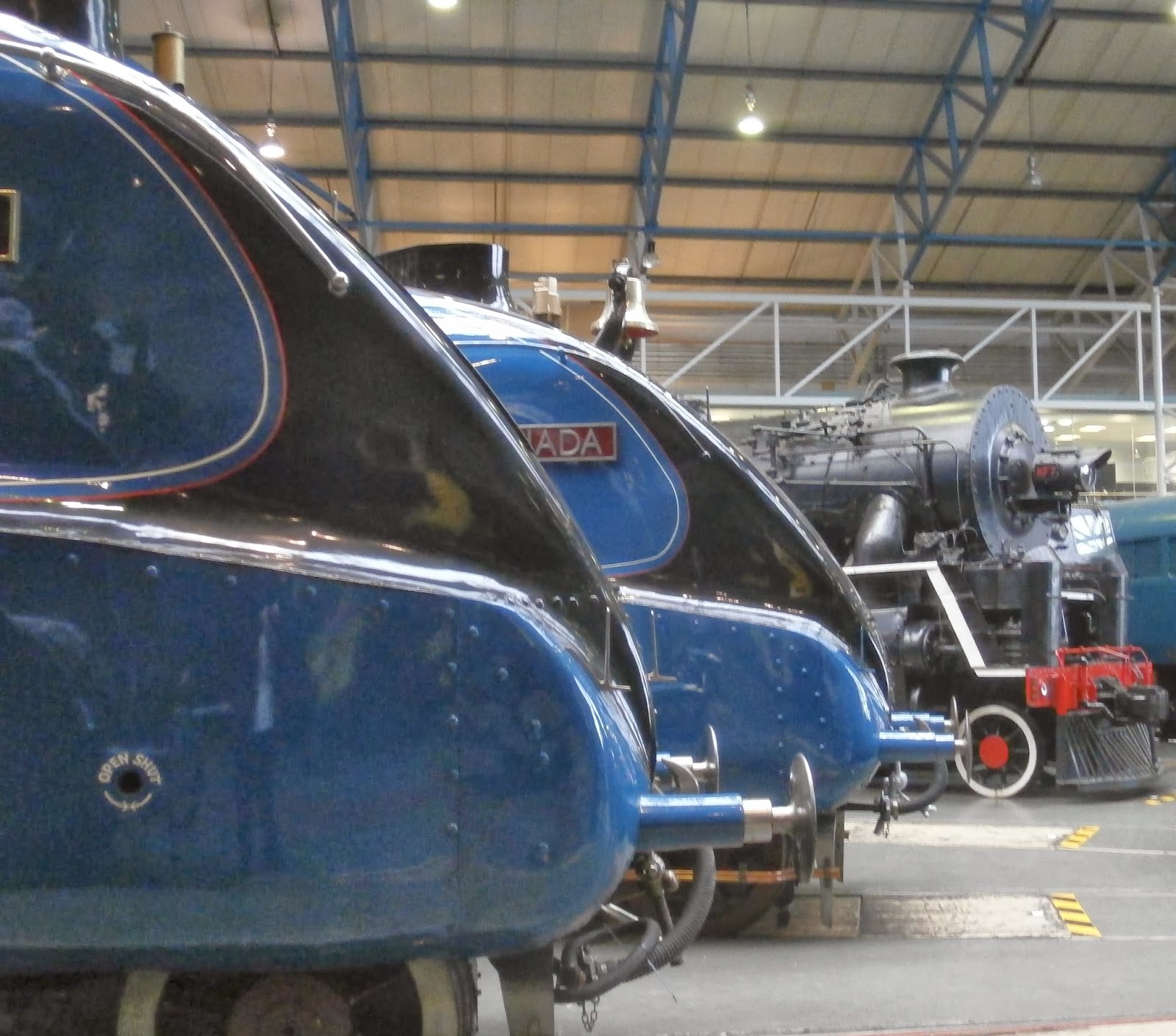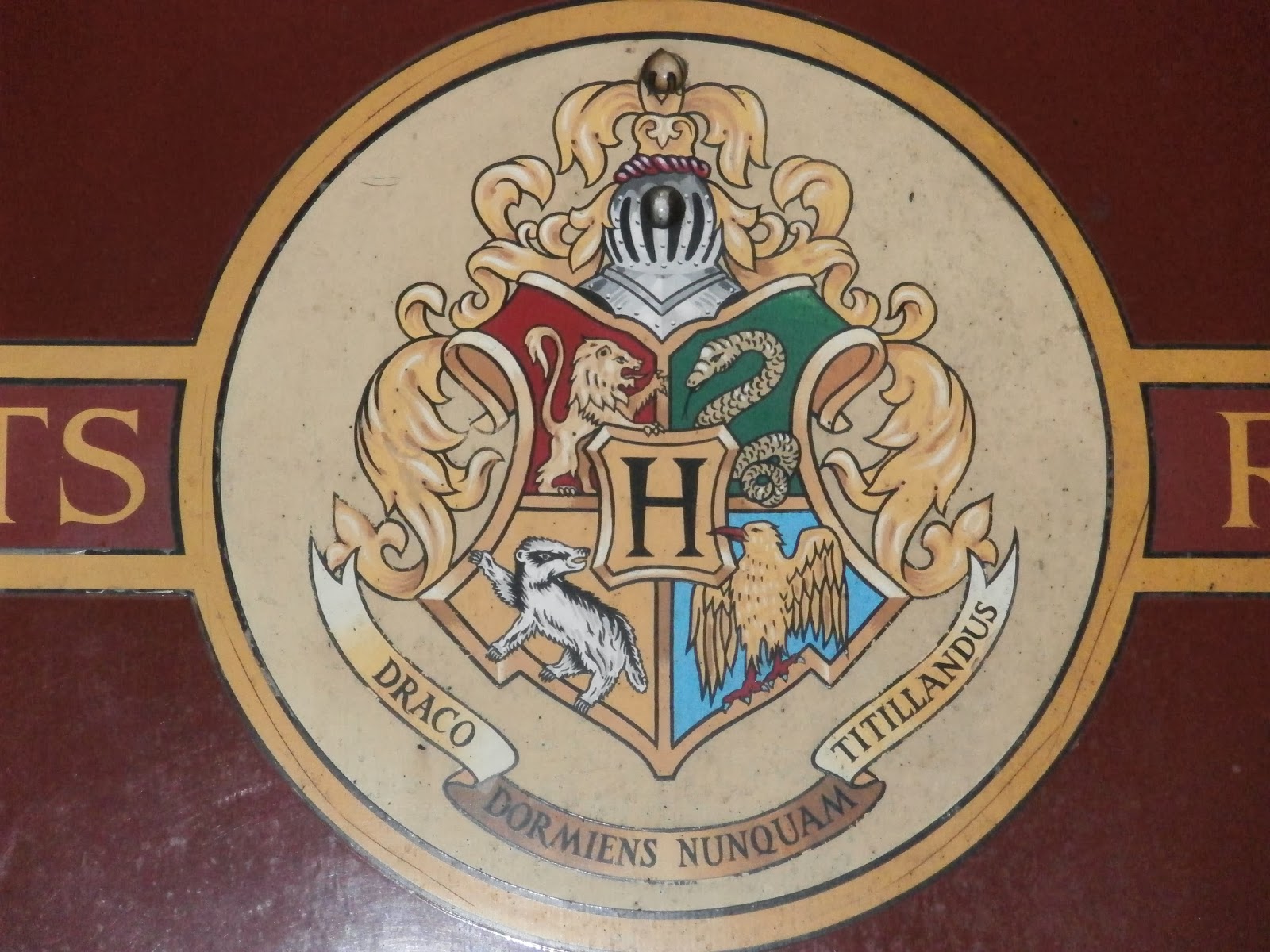York! First up: The National Railway Museum
As I mentioned earlier, York is one of my favorite cities in Britain. Steve took me there during my first visit to the country in May 1999 and I instantly loved it. We don't visit every time we're over, but we still try to get there when we can. I had never been to the National Railway Museum and Steve hadn't been since he was a school boy, so we paid it a visit.
How fitting that the National Railway Museum is inside an old railway station.
This is a replica of the 1829 Stephenson's Rocket built for the Science Museum in 1934. Where possible, it utilized the materials and methods available in 1829. The Stephenson's Rocket was not the first steam locomotive, but it was the most advanced of its day and became the template for the next 150 years.
The Dwight D. Eisenhower is an A4 steam engine originally built for the West Riding Limited service between London, Leeds, and Bradford. It was called the Golden Shuttle to reflect the area's woolen industry. It was renamed in 1945 in honor of Eisenhower, the supreme commander of the European allied forces during World War II. After putting in over 1.4 million miles in main line service, it was gifted in 1964 to the National Railroad Museum in Wisconsin. It returned to Britain and this museum in 2012.
These are also A4 engines. The Mallard, built in 1938, holds the world speed record for steam engines. On July 3, 1938, it hit a speed of 125.88 miles per hour on a track with a slight downgrade. The Dominion of Canada was designed and built at the same time as the Mallard.
Some more railway signage.
The National Railway Museum boasts an impressive collection of British trains. I enjoyed our visit there, even though I am not a huge train enthusiast.
How fitting that the National Railway Museum is inside an old railway station.
Inside the main part of the station, where they house the royal trains and an array of passenger cars from over the years.
In June 1842, Queen Victoria became the first British royal to travel by train. She must have liked the journey because in 1869 she commissioned a pair of coaches. She paid 1800 pounds of her own money and remains to this day the only monarch to pay for her train. These are photos of the rather pretty engine.
A view of the exterior display area in an adjacent hanger. I'm standing near the turntable.
The name plates off a variety of old engines. I love some of the names. I am intrigued by The Mayflower.
I never heard of a horse-drawn train before. This is the Port Carlisle Dandy Car, which dates to 1863. It was one of four horse-drawn Dandy cars built by the North British Railway in Edinburgh. The North British line was one of Scotland's major railways. Steam locomotives replaced the horse-drawn units as early as 1889, but a horse-drawn passenger service running to Port Carlisle remained in place until 1914.
This is one of the steam locomotives that replaced the horses. I was attracted to its copper kettle, which looks very much like those used in brewing.
These are also A4 engines. The Mallard, built in 1938, holds the world speed record for steam engines. On July 3, 1938, it hit a speed of 125.88 miles per hour on a track with a slight downgrade. The Dominion of Canada was designed and built at the same time as the Mallard.
I guess I must have stumbled upon Platform 9 3/4. Hogwarts, here we come!
The museum has a special section dedicated to The Flying Scotsman. I thought it was a specific locomotive, but it was actually a non-stop route between London and Edinburgh. The steam locomotives that ran the route, like this one, consumed 13,000 gallons of water each trip. Or, as the display noted, the equivalent of 312,000 mugs of tea.
The National Railway Museum boasts an impressive collection of British trains. I enjoyed our visit there, even though I am not a huge train enthusiast.























Comments
Post a Comment